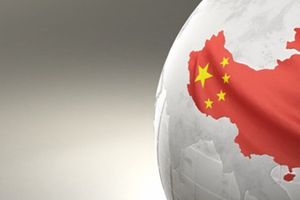
Samuel Obedgiu
Properly understood, supply chains are a process of delivery, transportation lanes, technology Outsourcing and assembling parts across many different countries that keeps the steady delivery of goods. Supply chains are not just part of the economy; they are the economy.
A few months ago, the U.S. Treasury Secretary traveled to Beijing to express concerns about the “over-capacity” of heavily subsidized Chinese industries flooding the West with very cheap goods, impacting industries in the EU. Specifically, cheaper Chinese electric cars and solar modules have displaced European producers, leading to concerns about subsidized Chinese overcapacity threatening certain Western industries.
Uganda heavily relies on global supply chains for basic goods, and any disruptions to these supply chains will result in scarcity and inevitably cause supply-side inflation. This reliance leaves the country vulnerable, as the tools of the Bank of Uganda are better positioned to deal with demand-side inflation. The future global price of microchips, for example, will determine the penetration extent of the smartphone market and other electronic products, and the geopolitics may result in semiconductors becoming more expensive. The biggest Taiwan Semiconductor company TSMC is setting up semi-conductor fabrications in Texas, in a bid to “friend shore” supply chains to more friendly countries. China is seen as a strategic threat to the US, whose intention to invade Taiwan might disrupt the semiconductor industry.
The problem with re-aligning supply chains of products like chips to friendlier countries is that in the short term the goods will become expensive.
Two years ago, President Joe Biden signed into law the Chips and Science Act, aiming to subsidize American chip making companies and restrict Chinese chip makers to certain American components of semiconductor technology. The semiconductor market can be roughly divided into three segments: “dumb” chips, medium-quality chips, and high-end chips, each serving different purposes. The majority of “dumb” chips are made in China, while 90 percent high-end chips are produced in Taiwan.
However, the complex ecosystem of over 9,000 suppliers for high-end chips, spread out across many countries, lacks international competition and is particularly vulnerable. Some of these countries in the semiconductor supply chains are not geo-political allies. Realigning this supply chain through “friend-shoring” would impact industries and make products expensive for countries like Uganda.
There are certain supply chains that stretch over 9,000 miles, reaching from Shanghai to New York or from Shanghai to Amsterdam, all in the pursuit of efficiency. Supply chains weren’t always global but the driving force behind globalizing them was to create efficiency (reducing costs) ultimately resulting in higher profits for the companies involved or lower costs for consumers, or both. While companies like Apple excelled in driving down visible costs, there are invisible costs that were not taken into account. One major issue is the fragility and vulnerability of the extended and complex supply chains. A breakdown in one part can cause the entire system to shut down, highlighting the hyper-vulnerability that comes with our proficient but delicate global supply chains.
Mr Samuel Obedgiu , Plant Biotechnologist and researcher.




